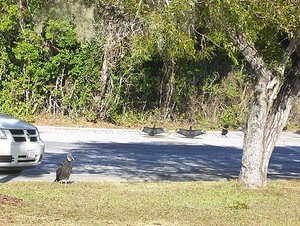Advertisement
Published: September 30th 2017

 Black Vultures
Black Vultures
These critters were all over southern Florida. Could be the state bird. These are Black Vultures as opposed to Turkey Vultures which have a red head. There are signs in the park warning that vultures can damage cars. They like to eat rubber - windshield wipers, rubber seals, tires, etc. Fortunately our rental car had no damage. We parked in the sun and they seemed to like shaded cars better.
Taken in the parking lot at the Anhinga Trail.Geo: 25.3945, -80.5818
Won't add much information here. Just click on the first picture to see all of the pictures on this page in an album with comments. When you finish with the ones in this album click on "Close" at the top right of the screen to be returned to this page. Then click "Next entry" at the botom of this page to go to pictures of the next park. This page has pictures from Everglades National Park. I'll add additional pages for Biscayne and Dry Tortugas.
A note of special appreciation to my sister-in-law, Cherrie Sneed, birder extraordinaire, for identifying all the bird pictures for me.
Hope you enjoy the pictures!
Lee
Advertisement
Tot: 0.105s; Tpl: 0.015s; cc: 11; qc: 45; dbt: 0.0606s; 1; m:domysql w:travelblog (10.17.0.13); sld: 2;
; mem: 1.1mb

 Black Vultures
Black Vultures
































